Located approximately 8 kilometers west of Córdoba, Medina Azahara is an archaeological site that exemplifies the splendor of Islamic Al-Andalus in the 10th century. Commissioned by Abd-ar-Rahman III, the first Umayyad Caliph of Córdoba, the construction of this opulent palace city began in 936 AD and continued for over 70 years. The city was conceived to symbolize the power and glory of the newly established Umayyad rule in Andalusia. It featured administrative buildings, residential quarters, mosques, and extensive gardens.
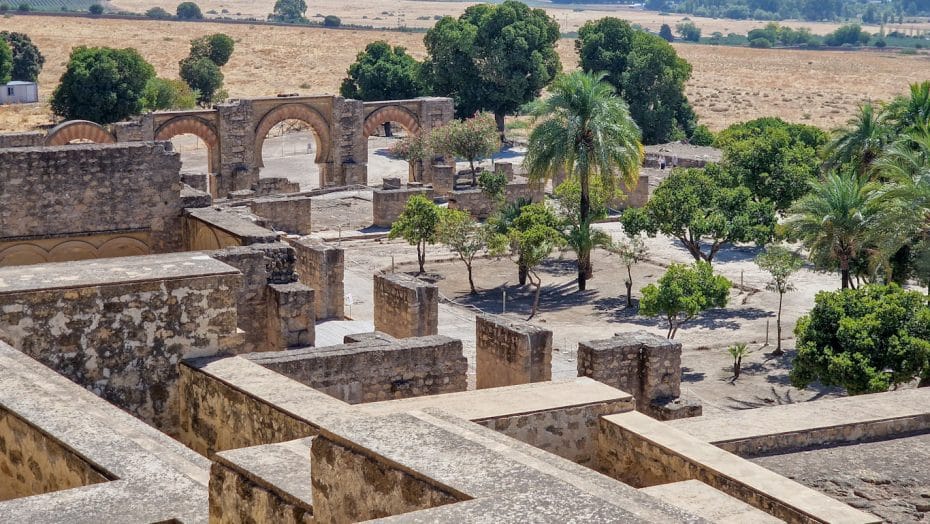
The city’s design was influenced by classical Islamic architecture and was declared a UNESCO Site as recently as 2018, making Córdoba, with four, the place with the most World Heritage Sites in Spain and the world. Other than Medina Azahara, Córdoba’s UNESCO list includes the Mosque-Cathedral, the Old Town, and the Festival of the Courtyards (Festival de los Patios).
A Brief History of Medina Azahara
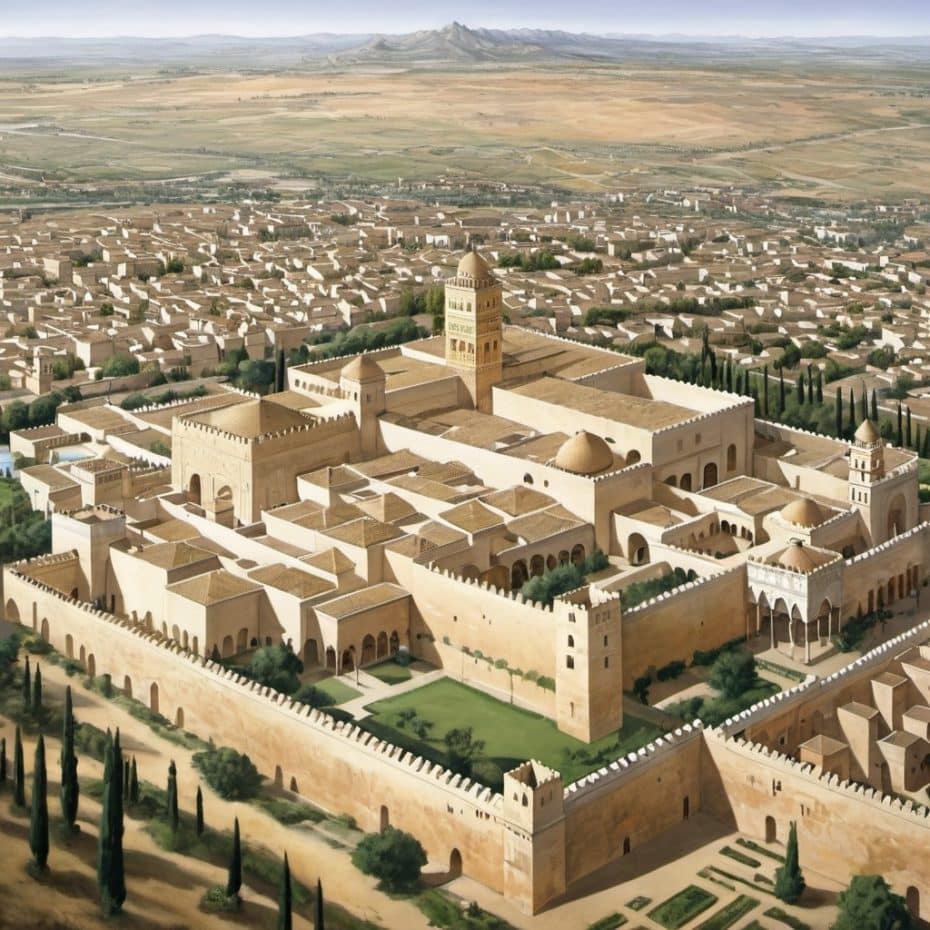
Medina Azahara, or Madinat al-Zahra, was a vast, fortified Arab Muslim medieval palace-city located on the western outskirts of Córdoba, Spain. It was constructed from 936 to 940 CE by Abd-ar-Rahman III, the first Umayyad Caliph of Córdoba. Intended to symbolize his power and influence, Medina Azahara was designed as the administrative heart of al-Andalus.
Strategically situated at the base of the Sierra Morena mountains, it offered an impressive view over the valley and the city of Córdoba and a practical defensive advantage. Spanning approximately 112 hectares (276 acres), the city featured many palatial buildings, gardens, workshops, barracks, and baths.
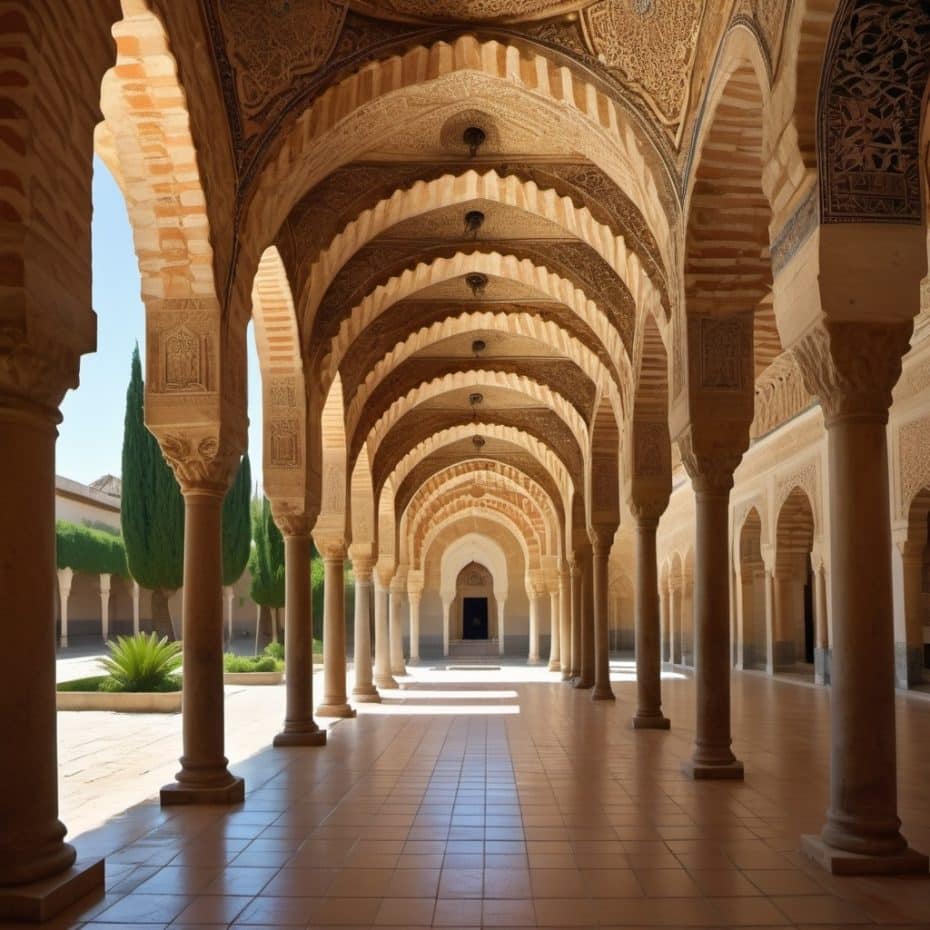
Among its many remarkable structures is the House of Ya’far, the prime minister’s residence. Another noteworthy element is Salon Rico, an opulent reception hall adorned with intricate carvings and colored marble. The city also boasted various gates and walls to control access and ensure the city’s security.
Medina Azahara functioned as a political and cultural hub only for about 80 years before falling victim to civil war and subsequent sacking in 1010 CE. Today, excavation efforts have unearthed about 10% of the original area but have revealed significant insights into Islamic architecture and urban planning during that period.
Medina Azahara Layout and Design
The palatial city of Medina Azahara was built as the administrative and residential capital of the Caliphate.
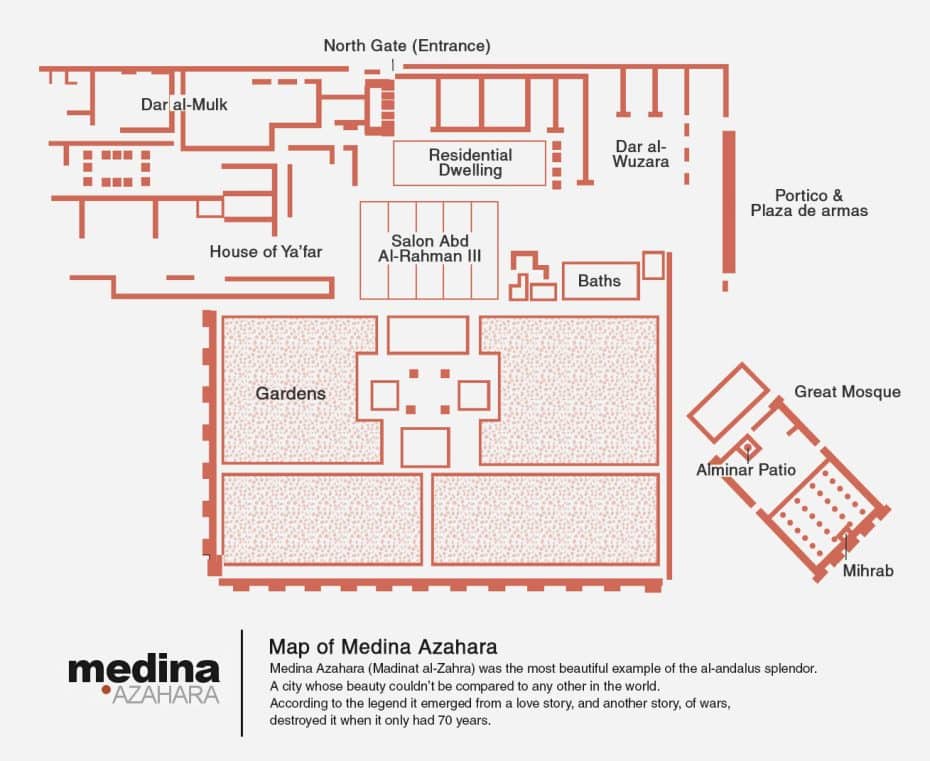
Unlike most Islamic-era cities in Spain, which feature a maze-like tangle of streets and alleys leading to small plazas, Medina Azahara was carefully planned. Its layout reflects an organized and hierarchical structure, with broad avenues, large open spaces, and distinct zones for administration, residential areas, and commercial activities.
The city was designed on a rectangular grid pattern with the primary roads running east-west and narrower streets intersecting them at right angles. This organization facilitated movement and communication throughout the city.
The city was built on three terraces on the slopes of the Sierra Morena. The highest terrace contains the administrative and ceremonial parts framed by lavish pavilions and beautiful gardens. The middle terrace houses residential quarters and the lower terrace primarily accommodates service areas and additional residences.
What to See in Medina Azahara?
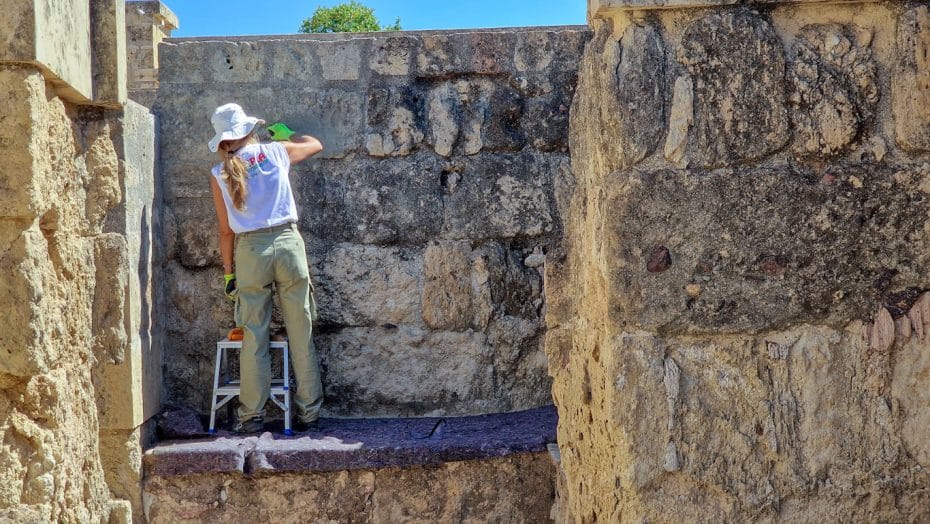
Though only around 10% of the city has been unearthed, Medina Azahara is an architectural and historical marvel with several significant areas to explore:
Medina Azahara Museum and Interpretation Center
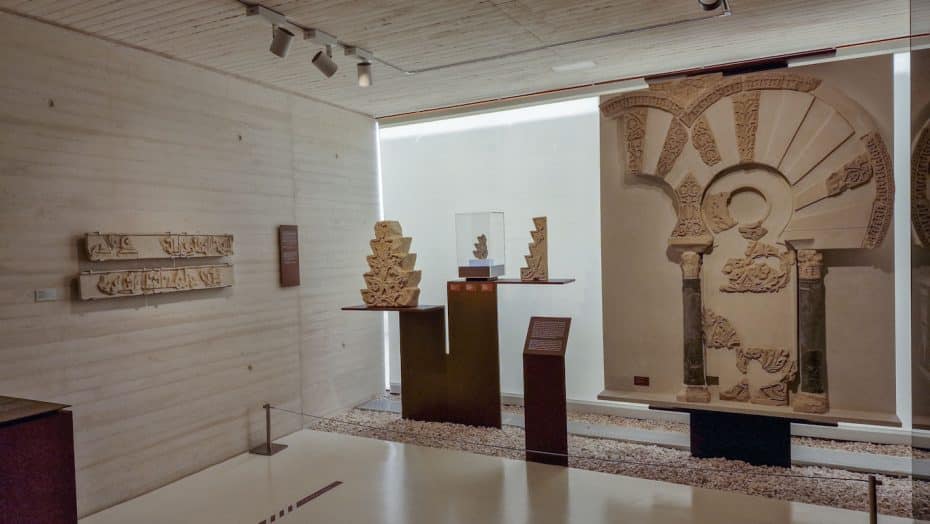
The most important spot within the archaeological complex is the Medina Azahara Museum and Interpretation Center. Opened in 2009 and designed by architects Fuensanta Nieto and Enrique Sobejano, it provides an excellent introduction to the sprawling ruins of this once-glorious city. The museum is located underground, minimizing its impact on the landscape while symbolizing the layers of history it aims to uncover.
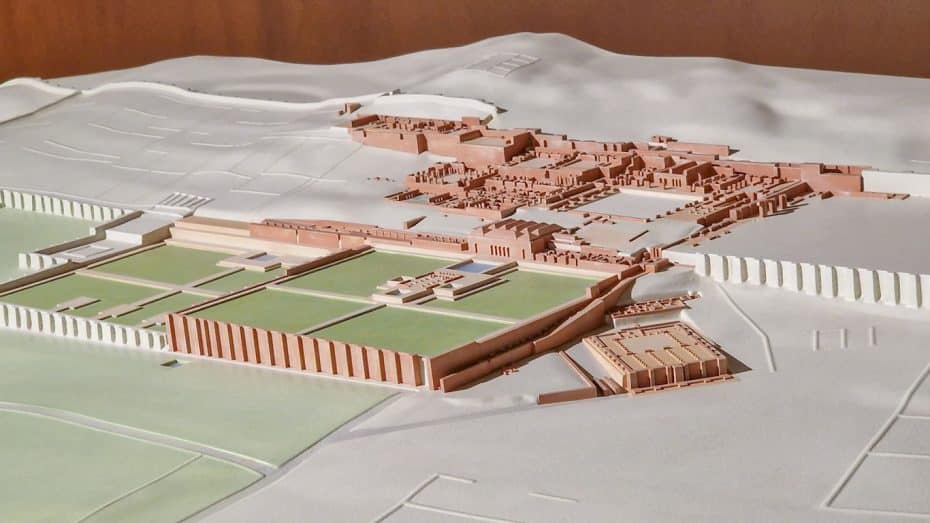
Several features stand out within the museum. One key highlight is the detailed model of Medina Azahara as it would have appeared in the 10th century. Additionally, visitors can view artifacts uncovered during excavations, including intricate ceramics, coins, and tools that shed light on daily life in the caliphate.
Exhibits also include architectural fragments such as ornate columns and arches. Interactive displays and multimedia presentations provide further context about the political, social, and economic conditions that shaped Medina Azahara’s development.
The Interpretation Center serves as an essential prelude to a tour of the ruins themselves, helping to contextualize what remains of Abd-ar-Rahman’s grand vision—palatial buildings, residential quarters, and administrative complexes.
Main Entrance Gate
The main entrance gate, or Northern Gate, of Medina Azahara, marks the beginning of a historical journey into the ancient city. Constructed in the mid-10th century, it sets the tone for the site’s grandeur.
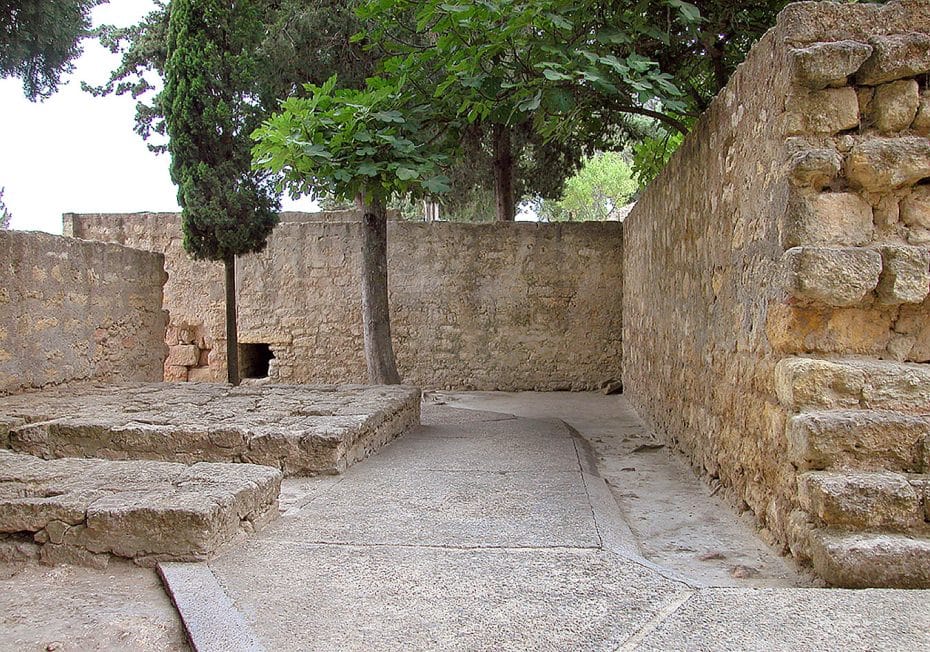
The gate once served as a primary access point, featuring robust defenses and intricate architectural designs emblematic of Islamic art. Today, remnants of stone arches and structural foundations offer insights into the engineering prowess of the time.
Salón Rico or Abd al-Rahman III Hall
The Salón Rico, or Rich Hall, served as the reception hall of Caliph Abd al-Rahman III. Located in the central part of Medina Azahara, it was used to impress ambassadors and important visitors with its lavish decorations.
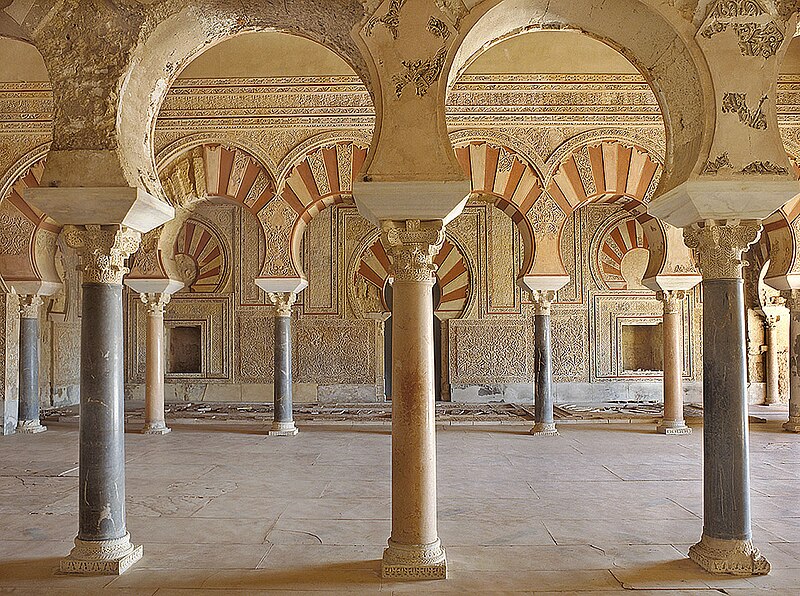
This hall is renowned for its intricately carved stucco and rich marble paneling. The ceilings were once adorned with gilt and vivid colors, giving the hall an opulent feel. The large arches and doorways still showcase the exquisite craftsmanship of the period.
Palace of Al-Hakam II
Located centrally within Medina Azahara, the Palace of Al-Hakam II was initially built by Caliph Al-Hakam II during his rule (961-976 AD). The palace complex showcases opulent living quarters adorned with stucco, marble columns, and polychrome tiles.
Key areas include reception halls and private rooms rich in decorative detail. Visitors are often struck by the impressively preserved mosaics and ornamental carvings.
House of Ja’far
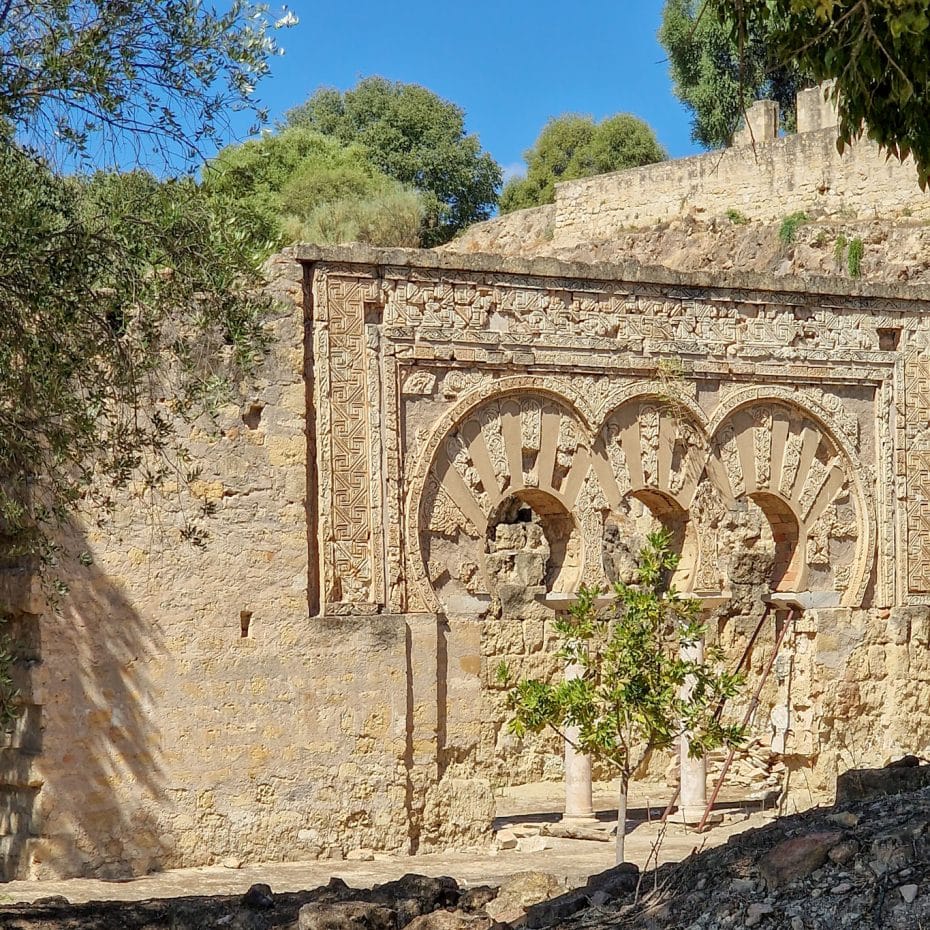
This building was likely the residence of one of Al-Mansur’s high officials, dating back to the late 10th century. The House of Ja’far reveals residential life in the caliphal city through its remaining wall structures and layout. Notable features include courtyard spaces that were once lush with gardens and irrigation systems as well as internal rooms that hint at domestic activities.
Bab al-Sudda (Eastern Portico)
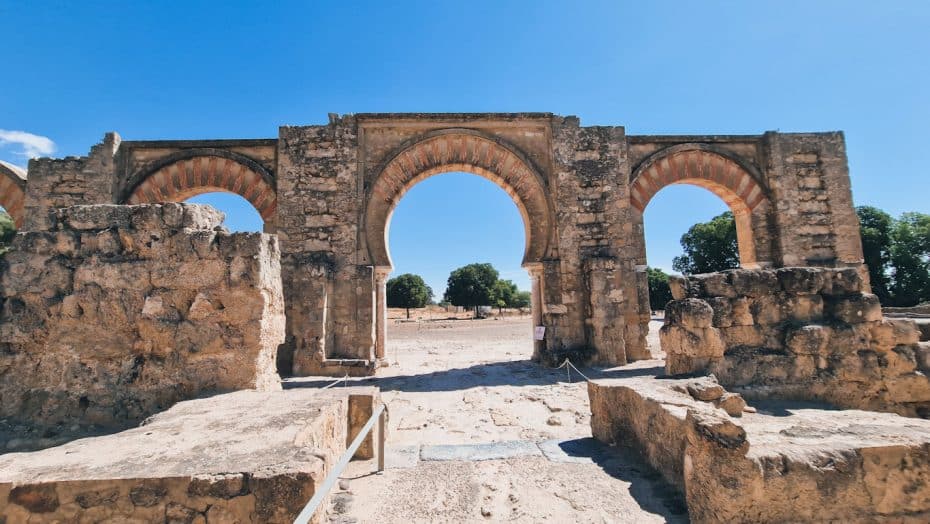
Bab al-Sudda is one of the city’s main entrances, located on the eastern side of Medina Azahara. This portico is notable for its grandeur, characterized by its detailed arches and intricate stonework. Within this entrance, officials would control access to the city, adding to its importance in the overall structure.
Academic Institution
Although largely in ruins now, this area showcases where scholars and students once engaged in intense study and intellectual pursuits. Situated to benefit from natural lighting, vestiges here likely housed libraries or classrooms where debates on theology, science, and philosophy occurred. Comprehensive digs have uncovered scripts and fragments that hint at a vibrant culture of learning influenced heavily by classical texts.
Royal Mosque
Positioned near the core administrative precincts, the Royal Mosque stands out for its religious importance. Established in 941 AD under Abd al-Rahman III’s orders, this mosque served as an Islamic worship space with features like mihrab (prayer niche) and expansive prayer halls. The craftsmanship seen in its arches and embellishments with inscriptions from the Quran is noteworthy.
Residential Area
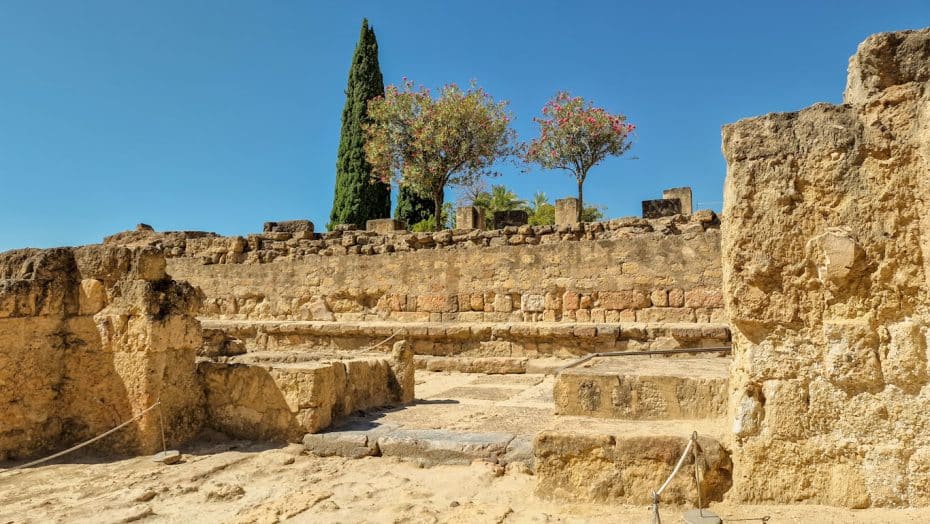
The Residential Area in Medina Azahara housed court officials, servants, and members of the caliph’s family. This part of the city is divided into luxurious houses with multiple rooms and essential facilities like baths (hammams), kitchens, and storerooms. The layout reflects a high level of urban planning, with water supply systems and gardens integrated into living spaces. Noteworthy aspects include the remains of mosaic floors, wall decorations, and an efficient drainage system that indicate a lifestyle of comfort and sophistication.
Upper Basilica Building
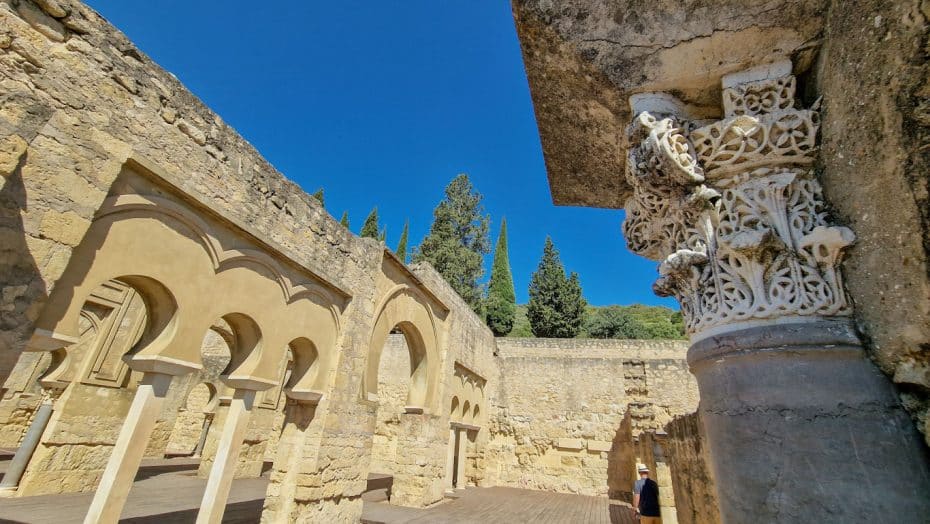
The Upper Basilica Building is a large structure primarily used for administrative functions within Medina Azahara. Built upon elevated ground to overlook other parts of the city, this building consists of several chambers used for bureaucratic activities. The architectural style combines massive pillars with expansive halls that were likely used for official gatherings and meetings. Points worth seeing here include remnants of intricate stone carvings and foundational footprints that reveal the scale and organization of administrative operations.
Garden and Courtyards
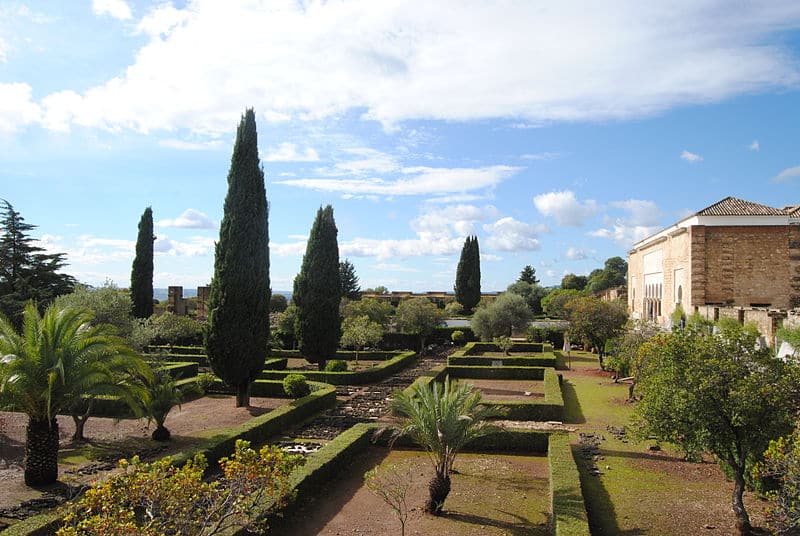
The Garden and Courtyards in Medina Azahara were integral to its landscape, designed to offer aesthetic pleasure and function as social spaces. Gardens feature terraces, walkways, reservoirs, and an advanced irrigation system derived from Roman techniques.
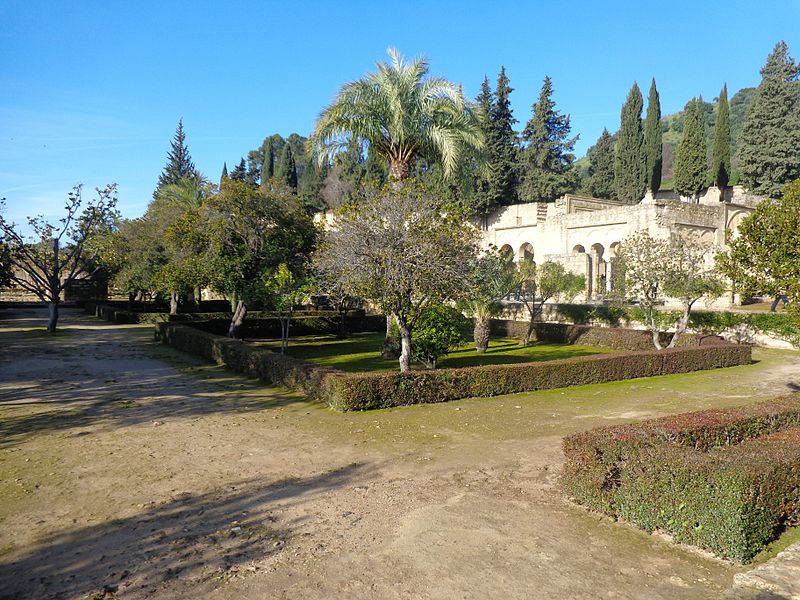
Military Barracks
The Military Barracks of Medina Azahara, located on the site’s eastern side, played a crucial role in housing the elite guard of Caliph Abd al-Rahman III. This area is characterized by its extensive layout, featuring several rectangular rooms arranged around courtyards. The barracks served as living quarters and included storage spaces for weapons and provisions.
The Northern Portico Area
The Northern Portico Area is an open space featuring a series of elegantly designed arches supported by columns, showcasing intricately carved decorations typical of 10th-century architecture. This area was likely used for official ceremonies or gatherings north of the reception halls and central residences.
Northwest Tower Ruins
The ruins of the Northwest Tower are part of the defensive structures within Medina Azahara, located on its northwest corner. The tower once provided a high vantage point for surveillance and defense over the city and the surrounding countryside. Built from sturdy stone blocks and featuring small slits for windows, it was integral to fortifying Medina Azahara against intruders.
Administrative Buildings Area
Medina Azahara showcases remarkable administrative buildings. These structures are located in the city’s uppermost terrace, designated for the Caliph and his officials. The complex includes offices and reception halls that bear intricate decorations and inscriptions extolling the glory of the Caliphate.
Aqueduct Remains & Bathing Complexes
The Aqueduct remains at Medina Azahara are part of a sophisticated system designed to bring fresh water from distant sources to the city. The primary source was the Sierra Morena mountains, from where water was channeled through a network of aqueducts stretched over miles. These aqueducts were constructed from limestone and consisted of twin channels to accommodate robust water flow. They were equipped with settling tanks to purify the water by allowing sediments to settle before distribution.
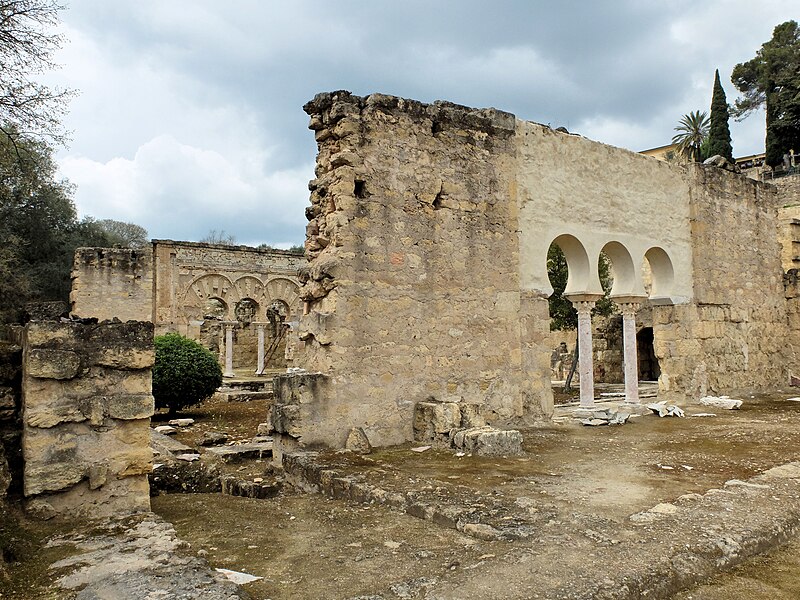
The Bathing Complexes within Medina Azahara are another testament to elaborate water management. These were not merely baths but multifunctional spaces featuring hot, warm, and cold rooms—caldarium, tepidarium, and frigidarium, respectively—akin to Roman bathhouses.
Central Patio Complex (Plaza de Armas)
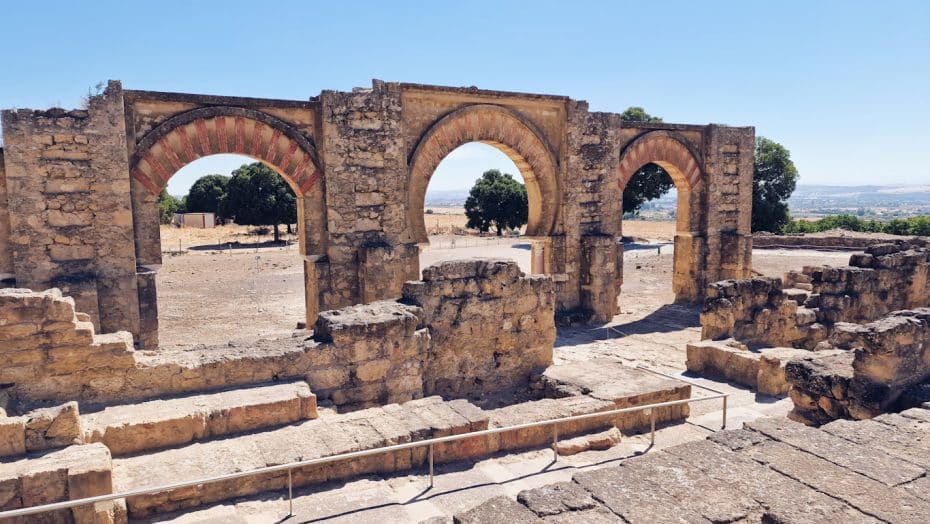
The Central Patio, also known as Plaza de Armas (a later Spanish Term), is one of the principal areas of Medina Azahara. This large open space is located at the core of the palatial city and serves multiple functions. Historically, it was used for public ceremonies and as a gathering place for the inhabitants. Several significant structures surround the Central Patio, including the Eastern Portico and administrative buildings.
How to Get to Medina Azahara
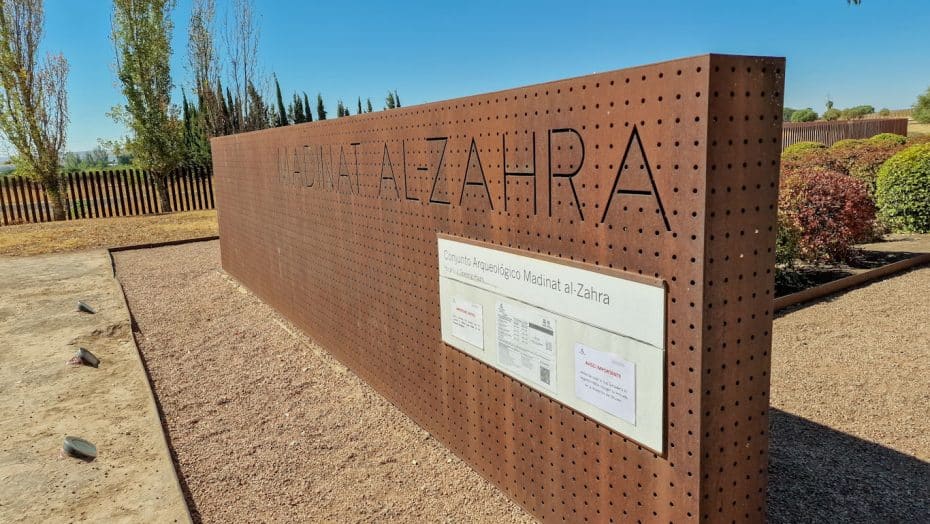
As mentioned, Medina Azahara is approximately 8 km (5 mi) west of Córdoba’s city center. Being one of Córdoba’s top tourist attractions, this historically significant Islamic palace city offers many options to get there.
By Car:
Driving to Medina Azahara is fairly straightforward. To get there, head west out of Córdoba on the A-431 road. After about 6 km, take the turnoff for Medina Azahara and follow the signs to the visitor center. There is a large parking area available.
By Bus:
To reach Medina Azahara by bus, you can take Bus O1 from Córdoba’s central bus station or Av. de la República Argentina. The journey will take approximately 20 minutes. The bus operates frequently throughout the day. It’s advisable to check schedules here or here beforehand, as they can vary seasonally.
By Organized Tour:
Several companies in Córdoba offer organized tours to Medina Azahara. These tours often include round-trip transportation, guided tours, and sometimes additional stops at related sites. These are convenient for those seeking in-depth historical insights from knowledgeable guides or those in a hurry.
By Taxi or Ride-Sharing App:
Another option is to take a taxi or use a ride-hailing app like Uber. This may be more expensive than other methods, but it provides direct and flexible transportation from any location within Córdoba.
Upon Arrival:
After arriving at the visitor parking area, a special shuttle bus takes passengers up the hill to the actual site of Medina Azahara, which is situated on elevated terrain. This shuttle runs regularly and is necessary as private vehicles are prohibited beyond the parking area due to preservation efforts and accessibility issues.
How to Visit Medina Azahara: Useful Information
- Location and accessibility: Medina Azahara is located at Ctra. Palma del Río, kilómetro 5, about 8 kilometers (5 miles) west of the city center of Córdoba. It is easily accessible by car or public transportation. To get there, the O-1 bus runs several times each day.
- Opening hours: Medina Azahara is open Tuesday through Sunday, from 9:00 a.m. to 6:30 p.m. during the winter months and from 9:00 a.m. to 3:30 p.m. during the summer. The site is closed on Mondays, January 1st, May 1st, and December 25th.
- Entrance fees and tours: Admission to Medina Azahara is free for European Union citizens and €1.50 for non-EU visitors. Guided tours, which are offered at an extra charge, are available in Spanish, English, French, and Italian.
- Shoes and sun protection: As you will be walking through the vast complex of ruins, it’s important to wear comfortable shoes for the visit. Since temperatures in Córdoba can be quite high during summer, consider bringing sun protection items such as hats, sunglasses, and sunscreen.
- Don’t miss the key sites: During your visit to Medina Azahara, make sure not to miss key sites such as Salón Rico (Rich Hall), a beautifully preserved ceremonial space; House of Ya’far (Ya’far’s residence), where you can see intricately decorated rooms; and the Central Portico (Patio Central), an impressive entrance with arches decorated with beautiful geometric patterns.
- Medina Azahara Museum: Before or after exploring the ruins, be sure to visit the on-site museum. Here, you can learn about the history of Medina Azahara, its construction during the reign of Abd al-Rahman III in 936—976 AD, and its eventual decline and destruction in 1010 AD. The museum displays artifacts unearthed from the site and offers interactive exhibits that provide context for your visit.
- Allocate enough time: To fully explore Medina Azahara and its museum, allocate at least three hours for your visit. This will allow you to appreciate the stunning architecture and rich history of this once-thriving city.



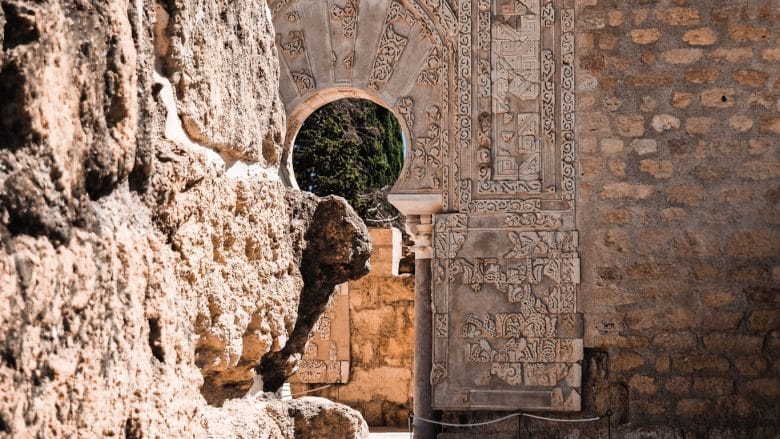
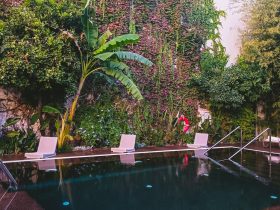
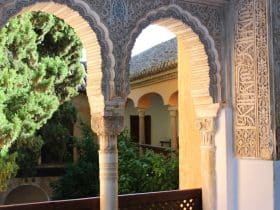
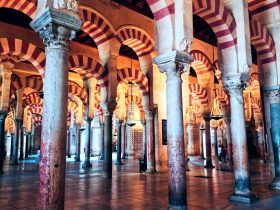

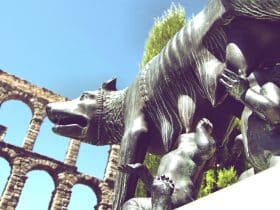
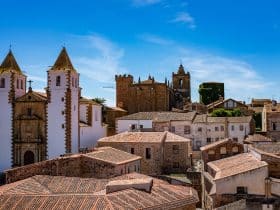
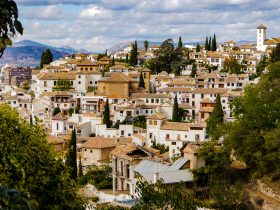
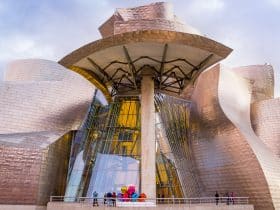





















Leave a Reply
View Comments